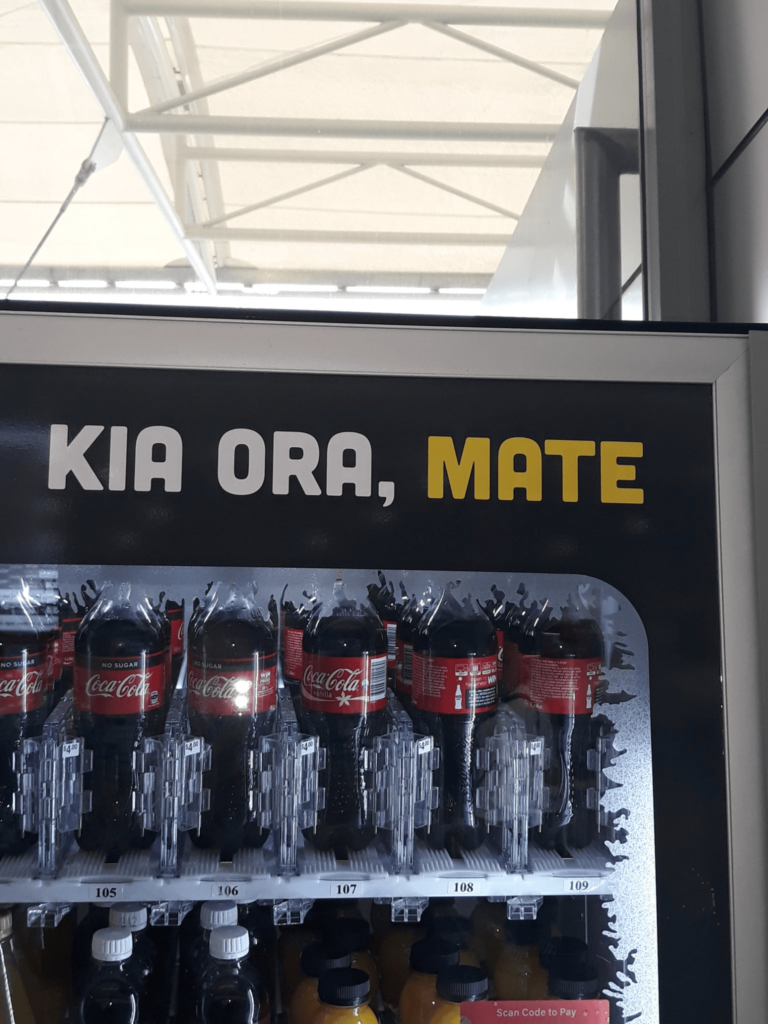
Expanding your organization in 2025? Avoid the shocking cross-cultural marketing blunders described below and instead ensure your message resonates with your global audiences with transcreation services.
Branching out into new markets – whether internationally or within diverse domestic regions – offers incredible opportunities, but it also demands a thoughtful communication strategy. In today’s globalized economy, localized cultural knowledge isn’t just valuable: it’s essential. This is especially true when your target audience speaks a different language or holds cultural perspectives distinct from your current customer base.
Far too often, companies assume that machine translation or a simple word-for-word approach will suffice. The results? Campaigns that miss the mark – or worse, cause offense. Effective global marketing isn’t just about language; it’s about understanding and aligning with the social values, humor, idioms, technological trends, and even legislation of the market you’re entering. Without this, your message may lose its meaning entirely.
That’s where transcreation becomes the “icon-maker” of global marketing campaigns.
Transcreation (and localization) services ensure your brand’s story stays authentic while resonating with a cross-cultural audience, creatively adapting content to cultural contexts. As you’ll see in the lackluster – to outright disastrous – marketing blunders outlined below, failing to prioritize professional transcreation services can lead to costly communication mistakes that your company will regret.
Don’t make the same mistake – let’s explore the differences between transcreation and translation and why AI alone can’t be trusted to ensure your message lands with impact:
How is Transcreation Different Than Translation?
There is much more to communication than just language. From body language to social cues, there are countless nuanced elements that contribute to the meaning of a message, and they can vary greatly from one culture to another.
Transcreation goes beyond word-for-word translation by creatively reimagining marketing content to ensure it connects with audiences on a cultural and emotional level. It’s not just about words, but rather about crafting the right message for the right culture.
Transcreation Defined
The term “transcreation” is a hybrid between “translation” and “creation” and involves rewriting a message to adapt it to a specific culture or target audience, taking the linguistic process of localization a step further and focusing specifically on the best, culturally-relevant method to convey the content itself.
A Note On Localization:
Localization is the process of adapting each element of your messaging to your target audience so it can reflect the needs, interests, and context of people in that specific area/group. Localization requires a deep understanding of the wider culture of your target audience.
A few of the biggest areas addressed in localization are: (1) Idioms, Sayings & Slang, (2) Humor, (3) Culturally Confusing or Offensive Imagery, and (4) Culturally-Rooted Scenarios.
You’ll need experienced translators who have first-hand expertise in the target culture and who also have technical knowledge in the field.
In order to adapt the most creative content elements of a marketing campaign such as the slogans, taglines, jokes, symbols, storytelling, and even emojis for a cross-cultural target audience, language professionals who are experts at the transcreation process must sometimes choose new words, images, and symbols entirely different from the original marketing campaign’s branded elements.
For example, in Japan, parents don’t use the story of a stork delivering babies to explain how their child “arrived.” Instead, they tend to explain that a baby came from a giant floating peach. Since using imagery or messaging that portrayed a stork delivering a baby would be confusing and irrelevant in Japan, transcreated content would use a peach in place of a stork and adapt the storyline where needed. Word-for-word, non-localized translation, however, would have botched the marketing campaign with stork imagery and words that didn’t convey the business’ accurate content.
5 Shocking Examples of Big Companies Making Marketing Blunders
Believe it or not, cross-cultural marketing blunders are remarkably common and show a lack of localization and transcreation prioritization. Even big companies with extensive resources are not immune to these kinds of mistakes despite the headache they can cause after a global or multicultural audience is negatively impacted by botched marketing campaigns.
1. IKEA’s Fartfull debacle

Although “fartfull” just means “speedy” in Swedish, IKEA’s unfortunately-named children’s desk had a very different impact in the U.S. market. U.S. consumers were startled (and a bit amused) by the gassy name of this desk!
What caused it:
- Lack of market research
- Lack of cultural awareness
- Cutting corners during the translation process
How to avoid making the same mistakes: A professional translator would have instantly spotted the error in this product name, and could have informed IKEA that it may not go over well in the U.S. market. Localization and transcreation services would have then be able to adapt the content and messaging to ones less odorous to U.S. parents.
2. Sankt Hedwig Hospital improperly implants knee prosthetics
Among the more upsetting outcomes on this list in 2006 and 2007, a translation error led to a series of failed knee replacement surgeries in Germany. Knee prosthesis packages that were made in the U.S. were incorrectly labeled by hospital staff using the the German equivalent that means “non-cemented” instead of “non-modular cemented.” Surgeons, who were misled by the incorrectly translated label, left knees without the necessary support and had to perform reparation surgeries on 47 patients!
What caused it:
- Inaccurate/incomplete translation
- Use of internal staff instead of a professional translator
- Lack of oversight
How to avoid making the same mistakes: Again, a professional translator would instantly have caught this serious mistake. At the very least, an expert translator with technical medical knowledge should have been consulted to proof the label translation instead of relying on in-house bilingual employees and/or machine translation.

3. HSBC’s tagline becomes a $10 million dollar mistake
When HSBC Holdings launched their “Assume Nothing” campaign to U.S. markets, the ambiguous headline proved largely effective. In foreign markets, however, the slogan translated roughly to “do nothing”. The ambiguity of the campaign was completely lost on international audiences, and even counter-productive to the goals of the marketing effort.
What caused it:
- A lack of transcreation services when expanding into a new global market
- Failure to apply localization to the marketing campaign
How to avoid making the same mistakes: A team of professional translators who were knowledgeable in the nuances of the target languages would have used transcreation to adjust the content to connect with international consumers. After having to redo and relaunch their marketing campaign, HSBC spent an additional $10 million to bring its campaign back to the international market in a way that would resonate with potential customers.
4. Amazon’s Swedish Website’s Embarrassing Launch
Yes, even the biggest companies on earth have made some major cultural marketing blunders. When Amazon launched the Swedish version of its website in 2020, the machine-translated site that went live was a hodgepodge of translation and localization disasters. Not only did the site mistake the Argentinian flag for the Swedish flag, but also many products had embarrassingly inaccurate descriptions as well. The word rooster, for example, was replaced with the Swedish word for male genitalia!
What caused it:
- An overreliance on machine translation
- A failure to consult human translators before publishing the live website
How to avoid making the same mistakes: There is still no replacement for human translators! Automated tools like Google Translate are notorious for missing context and other devastating mistakes. A human translator has a much deeper understanding of cultural context and can adapt content accurately.
5. Coca-Cola’s (Freudian?) Slip in New Zealand and Marketing Failure in China
In New Zealand…

Even though Coco-Cola has been responsive for some of the most impactful marketing campaigns, two of their digital expansions into different markets caused costly mistakes and serve as prime examples of marketing campaigns gone awry without localization and transcreation services.
Coca-Cola’s attempt to combine Māori, the New Zealand indigenous language, and English, resulted in a horrible misfire. The company inadvertently wrote “Hello, Death” in Te reo Māori, on a vending machine full of it’s products. Not the drink anyone wants!
Coca-Cola thought the use of “mate” was safe because of its use as a friendly term in English-speaking local cultures of the region. But in Māori the word “mate” literally means death.
In China…
Coca-Cola’s attempt to localize its brand in China initially backfired due to a poor Mandarin translation. The company used the phrase “Ke-Kou-Ke-La,” which unintentionally translated to “bite the wax tadpole.” Unsurprisingly, the campaign failed to resonate with consumers. Coca-Cola quickly corrected the mistake by adopting “Ko-Kou-Ko-Le,” which translates to “happiness in the mouth,” ultimately salvaging the brand’s image in the market.
What caused it:
- Cutting corners and not consulting translators with knowledge of the target language
- Lack of quality assurance/oversight of finished translation
How to avoid making the same mistakes: Quality assurance provided by a language professional with actual knowledge of the target languages could have saved Coca-Cola from enormous headaches. Cutting corners rarely pays off when it comes to cross-cultural advertising!
When You Need an Icon-Maker, Choose Translators Who Are Localization and Transcreation Experts
When expanding to a foreign or even domestic market where your audience speaks a different language, it’s no time to cut corners. Failure to take context and cultural differences into consideration when creating your messages for that new audience can cause embarrassment and long-lasting damage. This is especially true in our digital landscape and age of social media influencers, where a marketing misstep can spread like wildfire before your organization has the time to pivot.
The solution is simple: hire a language services provider who has an intricate knowledge of localization and transcreation. Using experts who can accurately translate or interpret your messages to customers and employees in a new market will tremendously impact your success.
If you are in need of a language services provider who will partner with you to avoid cultural marketing blunders, we’d like to be that partner. Start a conversation with us today to learn more about how we can help your company expand to new markets successfully.
